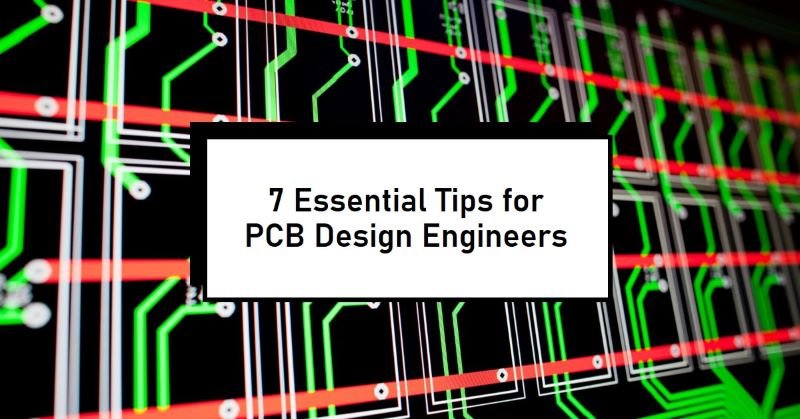Understanding Interconnect Defects in PCBs: Causes, Detection and Prevention
Printed Circuit Boards (PCBs) are the backbone of modern electronic devices, serving as a foundation for interconnecting electronic components. Interconnects—conductive pathways formed on the PCB—are vital for the seamless transmission of signals and power between these components. However, defects in these interconnects can significantly impact a PCB’s functionality and reliability.
Interconnect defects can arise during manufacturing, design, or from environmental stresses, leading to issues such as open circuits, short circuits, and unreliable solder joints. Understanding these defects, their causes, and preventive measures is essential for improving PCB performance and longevity.
Types of Interconnect Defects
2.1. Open Circuits
Description and Causes
An open circuit occurs when a conductive path on the PCB is interrupted, preventing current flow. Common causes include:
- Incomplete etching during the manufacturing process.
- Physical damage to traces or components during handling or assembly.
- Misaligned drilling leading to broken via connections.
Visual Indicators and Examples
Open circuits can often be identified through:
- Visible gaps in copper traces.
- Disconnected pads or vias.
For example, in high-speed PCBs, an open circuit in a critical signal path can result in system malfunctions or loss of data integrity.
2.2. Short Circuits
Common Reasons
A short circuit occurs when two or more conductive pathways inadvertently connect, causing unintended current flow. This can result from:
- Solder bridging during the reflow process.
- Design errors, such as insufficient spacing between traces.
- Foreign particles, like solder splashes or dust, bridging gaps.
Consequences on PCB Functionality
Short circuits can cause:
- Overheating of components, leading to permanent damage.
- Unexpected behavior, such as triggering incorrect circuits.
- Complete device failure in critical applications.
2.3. Cold Solder Joints
How They Occur
Cold solder joints are weak or incomplete solder connections caused by:
- Insufficient heating during soldering.
- Use of low-quality solder or flux.
- Movement of components during cooling.
Symptoms in Electronic Devices
- Intermittent operation or failure of the connected component.
- Increased resistance at the joint, leading to signal degradation.
For instance, a cold solder joint in a power circuit could result in voltage drops and system instability.
2.4. Delamination
Causes
Delamination refers to the separation of PCB layers, which disrupts the continuity of interconnects. This defect can result from:
- Improper lamination during manufacturing.
- Exposure to excessive thermal or mechanical stress.
- Moisture ingress into the PCB material.
Effect on Interconnect Continuity
- Loss of electrical connectivity between layers.
- Increased impedance in signal pathways, affecting performance.
Delamination can be catastrophic in multilayer PCBs used in high-speed or high-frequency applications.
2.5. Voids in Vias
Formation and Challenges
Voids are hollow spaces within via walls caused by:
- Incomplete copper plating during the via formation process.
- Gas entrapment during plating or lamination.
- Poor cleaning of drilled via holes before plating.
Techniques to Detect and Mitigate
- Detection: X-ray inspection and microsection analysis are commonly used to identify voids.
- Mitigation: Improved plating techniques, such as pulse plating, and ensuring proper cleaning of vias before processing.
Voids in vias can reduce current-carrying capacity and compromise the mechanical strength of the interconnects.
3. Causes of Interconnect Defects
3.1. Manufacturing Errors
Manufacturing errors are among the most common causes of interconnect defects in PCBs. These errors may include:
- Issues During Fabrication:
- Etching Defects: Over-etching can cause open circuits, while under-etching may lead to shorts between traces.
- Drilling Problems: Misaligned or poorly finished via holes can sever connections or reduce reliability.
- Plating Defects: Incomplete or uneven copper plating inside vias can create voids and disrupt interconnections.
- Quality Control Lapses:
- Inadequate inspection during the manufacturing process can allow defects to go undetected, leading to costly rework or failures in the field.
3.2. Design Flaws
Design issues often arise from inadequate consideration of PCB design rules and operational requirements. Examples include:
- Insufficient Trace Width or Spacing:
- Narrow traces are more prone to breaking under thermal or electrical stress.
- Insufficient spacing between traces increases the risk of short circuits.
- Poor Via Design:
- Vias with improper aspect ratios or inadequate plating can fail mechanically or electrically, especially in multilayer boards.
3.3. Environmental Stress
PCBs operate in diverse and sometimes harsh environments, which can degrade interconnects over time. Key factors include:
- Thermal Cycling and Its Impact:
- Repeated expansion and contraction due to temperature fluctuations can cause delamination, cracked vias, or broken solder joints.
- Moisture and Humidity Effects:
- Moisture ingress can lead to corrosion of copper traces and vias, compromising electrical integrity.
3.4. Material Selection
Choosing the wrong materials for the PCB can introduce weaknesses in interconnects. Critical considerations include:
- Role of Substrate Quality:
- Substrates must have low moisture absorption and high thermal stability to prevent delamination and swelling.
- Copper Quality:
- Low-quality copper foils may have impurities or inconsistent thickness, leading to increased resistance and vulnerability to defects.
Testing and Detection of Interconnect Defects
To ensure the reliability of PCBs, defects must be identified early through rigorous testing. Common testing methods include:
4.1. Automated Optical Inspection (AOI)
- Overview: AOI systems use cameras and software to visually inspect PCBs for surface-level defects like missing components, solder bridges, or open circuits.
- Advantages: Fast, non-contact, and highly accurate for detecting visible defects.
4.2. X-ray Inspection
- Overview: X-ray systems can penetrate PCB layers to detect hidden defects, such as voids in vias or solder joints.
- Applications: Essential for multilayer PCBs and high-density designs where internal defects are challenging to identify visually.
4.3. Electrical Testing (Flying Probe, In-Circuit Test)
- Flying Probe Testing: Verifies continuity and isolation in the circuit by probing each connection point.
- In-Circuit Testing (ICT): Uses test fixtures to measure electrical parameters and detect shorts, opens, or component failures.
4.4. Functional Testing
- Overview: Simulates the actual working environment of the PCB to verify that it performs as intended under operational conditions.
- Advantages: Ensures the complete system’s functionality beyond just individual interconnects.
Importance of Early Defect Detection
Identifying defects early in the production process saves costs by reducing rework and preventing defective products from reaching the market. Moreover, it improves overall product quality and reliability, which is crucial for applications in automotive, aerospace, and medical industries.
Prevention and Mitigation Strategies
5.1. Best Practices for Design
Implementing sound design principles can significantly reduce the likelihood of interconnect defects. Key recommendations include:
- Using Appropriate Trace Widths and Spacing:
- Follow industry design standards (e.g., IPC-2221) to ensure traces are wide enough to handle current loads and are spaced adequately to prevent short circuits.
- Account for environmental factors like thermal expansion when defining trace dimensions.
- Ensuring Robust Via Designs:
- Use proper via aspect ratios to maintain structural integrity, especially in multilayer PCBs.
- Incorporate plated through-hole vias for high-reliability connections. For high-frequency applications, consider blind or buried vias to optimize signal performance.
5.2. Improving Manufacturing Processes
Enhancing fabrication and assembly processes can mitigate defects at their source. Suggested measures include:
- Enhanced Quality Control Measures:
- Implement process controls during critical stages, such as etching, drilling, and soldering, to ensure consistency.
- Use statistical process control (SPC) methods to monitor and analyze production metrics.
- Regular Inspection Protocols:
- Employ advanced inspection technologies such as AOI, X-ray, and in-circuit testing at multiple stages of manufacturing.
- Conduct periodic audits of manufacturing facilities to ensure adherence to quality standards.
5.3. Material Considerations
The selection of materials plays a crucial role in preventing interconnect defects. Factors to consider include:
- Selection of High-Quality Laminates:
- Use laminates with low thermal expansion coefficients and excellent moisture resistance to reduce the risk of delamination and swelling.
- For high-performance PCBs, opt for materials with superior dielectric properties to maintain signal integrity.
- Choice of Conductive Materials:
- Ensure copper foils used for traces and vias are of uniform thickness and free from impurities.
- For applications requiring high reliability, consider using enhanced copper plating techniques, such as electroless nickel immersion gold (ENIG).
Conclusion
In conclusion, Interconnect defects in PCBs can severely impact the performance, reliability, and lifespan of electronic devices. By understanding the causes of these defects—ranging from manufacturing errors to environmental stress—and implementing effective prevention and mitigation strategies, engineers and manufacturers can significantly enhance PCB quality.
From adopting best design practices and improving manufacturing processes to selecting high-quality materials, every step plays a vital role in ensuring robust interconnections. Early testing and defect detection further help minimize risks and costs.








